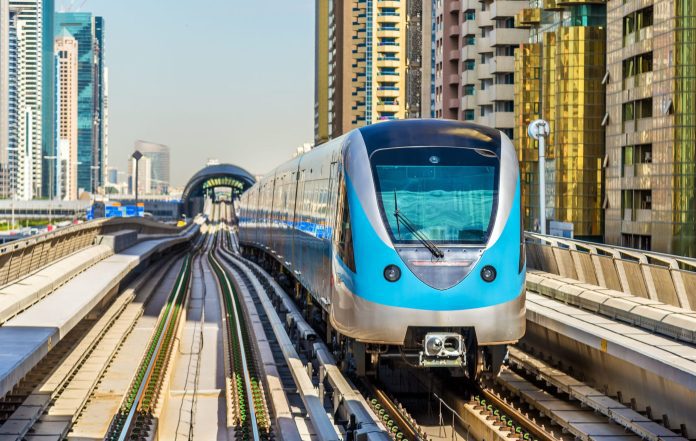Predictive maintenance is a key IoT use case that’s improving railroad operations
At a high level, the internet of things (IoT) is all about maximizing asset availability, reliability and efficiency. This is highlighted in the railroad industry, both passenger and cargo, where timelines has a direct impact on business profitability. Here we examine two case studies wherein railroad operators leveraged IoT and related solutions to detect problems before they occurred in an effort to optimize operational efficiency.
Deutsche Bahn in Germany
Deutsche Bahn aims to implement predictive maintenance tools to be able to control its points.To enable that, the current pulse at the connection cable to the point is measured in the signal box. Special sensors also record status data, which is then analyzed centrally, at relevant parts of the point controller. Possible deviations from the reference value, such as occur before faults arise, are detected by smart systems at an early stage. Once this occurs, service teams can then inspect the affected parts more closely on site and replace them if necessary so that operations are not disrupted.
The agreement between Telent and Deutsche Bahn comprises system components, planning services, installation and commissioning of the solution, which monitors a total of around 7,000 point machines at 305 operating control points throughout Germany.
“Telent has been a reliable partner to Deutsche Bahn AG in the telecommunications segment for many years and has demonstrated its strength as part of nationwide rollouts, in particular. We’re delighted at continuing our working relationship,” says Dirk Bernhardt, head of purchasing for telecommunications infrastructure, train marshaling yards and equipment at Deutsche Bahn.
“With our IoT solution, we can help enhance punctuality and secure operations at Deutsche Bahn. The rail network is one of the critical infrastructures that must be operated with the very highest reliability. We’re delighted that we can continue our cooperation with this new order,” said Jürgen Hansjosten, member of euromicron’s executive board.
Telenet, fully owned by German group Euromicron, offers customized and tailor-made technology solutions and smart services for the area of critical infrastructures and industrial plants.
German company Telent will supply compatriot railway company Deutsche Bahn with smart multi-channel measurement systems, which will be implement at around 7,000 points over the next three years.
Telent said its IoT solution detects potential defects in the railway infrastructure before they arise. That is made possible by central remote monitoring of the point machines. Telent’s project partner is the Dutch company Strukton Systems, whose multi-channel measurement systems measure, digitize and process the relevant data.
VR Group in Finland
Finnish railway operator VR Group has implemented SAS Analytics to get predictive maintenance capabilities in order to provide punctual travel service and improve customer satisfaction.
The Finnish state-owned railway operator said it is key to use the data that the company has to find new ways to deliver better service and avoid unexpected delays. To achieve this, VR Group turned to analytics and the internet of things (IoT) to keep its fleet of 1,500 trains on the rails and provide a better service for customers.
To reduce costs and maximize uptime, VR Group wanted to move from a traditional maintenance approach that focused on replacing parts as needed. “Although we are the only service for passenger railway traffic in Finland, we are certainly competing with other means of transportation,” said Kimmo Soini, SVP for maintenance at VR Group. “We also want to ensure our competitiveness when it comes to maintenance, because maintenance costs are included in ticket prices.”
In recent years, VR Group began fitting sensors on various systems and subsystems to monitor symptoms of wear and other failures. But the sensors themselves only collect the raw data. The company said that the real benefit comes in analyzing that data, often in real time, to allow engineers to take a more appropriate responses. To add this level of intelligence to their operations, VR Group turned to SAS Analytics.
Traditionally, VR Group approached maintenance in two ways. Major systems, like wheels and bogies, were covered by scheduled maintenance. The other method was to fix things, like doors, when they broke down. These were hard to forecast and could lead to missed routes and delays affecting passenger travel plans.
VR Group developed a predictive maintenance program that focuses on monitoring the condition of parts at all times. In this program, mathematical models predict when parts are likely to fail so that they can be replaced before they cause unplanned downtime. By looking at sensor data, SAS Analytics gives VR Group a real-time overview of its fleet. The railway company’s goal is to change its maintenance approach, so eventually everything will be based on real-time monitoring.
“If a door on a train starts to open and close slower than usual, it is likely to break down within a certain time frame, and we must do something before that happens,” said Soini. “Analytics allows us to develop our repair operations around predictive maintenance.”
By looking at new and historical data, SAS Analytics helps VR Group plan the maximum interval between certain maintenance events, like turning wheels or replacing the wheel-and-axle sets on the trains.

